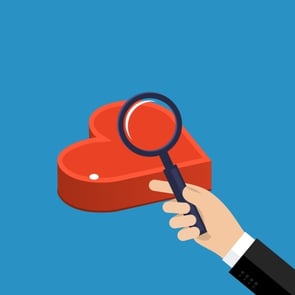 How well do you know your customers? If your first response to this question is to begin spouting off sales facts and figures, the answer is, "Not well at all." Purchasing data may tell you about a customer's business and buying behavior, but it says nothing about who they are and what makes them tick.
How well do you know your customers? If your first response to this question is to begin spouting off sales facts and figures, the answer is, "Not well at all." Purchasing data may tell you about a customer's business and buying behavior, but it says nothing about who they are and what makes them tick.
Don't go out and hire a staff psychologist just yet. You don't need an advanced degree to learn how your customers think. According to the principles of Whole Brain Thinking, we all have a dominant quadrant that influences the way we process information. When you identify a customer's quadrant, you're better equipped to communicate in the way they will be most receptive to.
Follow these steps to learn what makes your customers tick and how you can use that knowledge to build a strong relationship.
1) Understand how YOU think
No matter how many sales calls you make, you are the one constant in all those interactions. Once you learn which quadrant you operate from, you'll know what types of adjustments to make when dealing with others.
2) Step outside your shoes
When you hit an impasse with a customer, it's usually because you're approaching the situation using your own preferred method of communication. The customer becomes frustrated because their needs aren't being met, resulting in a disconnect. Tailor your presentation with your customer's values in mind.
3) Focus on thinking, not behavior
Most sales training models are behavior-driven, but external actions are based on internal motives. Customers make the decision to buy when they believe it will help them achieve their goals in a way that satisfies their personal criteria. For example, a buyer who operates from the practical Green quadrant is unlikely to respond to an approach that emphasizes a product's novelty and innovation.
4) Learn a customer's specific triggers
A trigger is an event that prompts a corresponding action. It could be external, such as when a company upgrades their computer system to accommodate their growing business. Internal triggers involve satisfying needs and desires, such as a restaurant owner buying an espresso machine to attract an upscale customer base. Learning to identify and anticipate a customer's triggers gives you an advantage in determining when they're ready to purchase.
5) Reassess and adapt
While the quadrants create some common ground, each person is a unique individual. Using Whole Brain Thinking allows you to tweak your approach to accommodate differences in people as well as the inevitable changes that are a fact of life.
"Time is money" is a cliche because it's true. You can't afford to waste time on sales presentations that are doomed to failure. Learning how to communicate in someone's preferred manner helps you increase your conversion rate by focusing in on what really matters to your customers.


